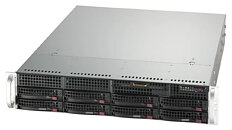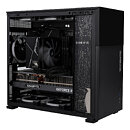
Leaked AMD "Sound Wave" Arm-based APU Linked to "Microsoft Surface (2026)" Lineup
Late last month, data miners unearthed a wide variety of unannounced AMD Ryzen processor IPs. A "Sound Wave" product category received less attention, but Team Red's curious codename has reemerged in the middle of May. Thanks to fresh Kepler L2 theorizations, this mysterious mobile APU family has a potential end destination. Leaks from 2024 suggested that company engineers were working on an unusual Arm-based processor branch. AMD is cozily well-versed in all things x86, but an alleged present day diversification—into Arm (x64) territories—has confounded a fair few industry watchdogs.
In a tangential conversation—forking off from speculative "Zen 6" and PlayStation 6 APU chatter—Kepler L2 reckons that Team Red "Sound Wave" chips will be deployed in 2026, possibly within a refreshed Microsoft Surface lineup. Current-gen Arm-based offerings—leveraging Qualcomm Snapdragon X processors—have generated mixed user impressions (press and public alike). Microsoft and Qualcomm's "Windows on Arm" (WoA) platform partnership was elevated earlier on in May (with cheaper options), but troublesome hardware-to-software compatibility issues have reportedly caused some rifts in this relationship. As of last week, evaluators seemed to be poking around with NVIDIA's rumored Arm-based "N1" chip series on Windows. In theory, AMD's futuristic "Sound Wave" designs could do battle with (claimed) Team Green and MediaTek collaborative efforts.
In a tangential conversation—forking off from speculative "Zen 6" and PlayStation 6 APU chatter—Kepler L2 reckons that Team Red "Sound Wave" chips will be deployed in 2026, possibly within a refreshed Microsoft Surface lineup. Current-gen Arm-based offerings—leveraging Qualcomm Snapdragon X processors—have generated mixed user impressions (press and public alike). Microsoft and Qualcomm's "Windows on Arm" (WoA) platform partnership was elevated earlier on in May (with cheaper options), but troublesome hardware-to-software compatibility issues have reportedly caused some rifts in this relationship. As of last week, evaluators seemed to be poking around with NVIDIA's rumored Arm-based "N1" chip series on Windows. In theory, AMD's futuristic "Sound Wave" designs could do battle with (claimed) Team Green and MediaTek collaborative efforts.
















































































